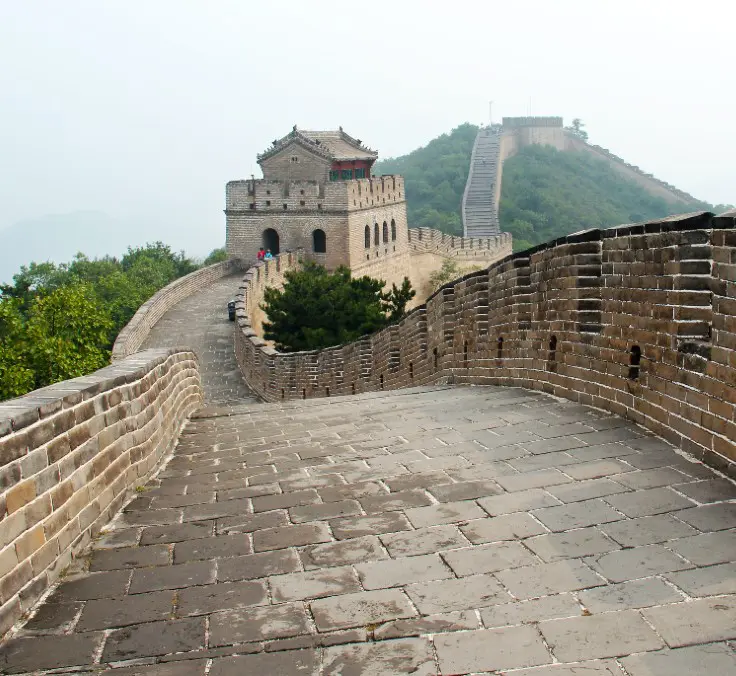ECONOMY | 11.23.2023
China's structural challenges: the slowdown, real estate sector, and trade war
A trade war, a slowdown, a bad reopening after the pandemic, the real estate sector… Problems from multiple sources of conflict continue to pile up for China, but is there reason to believe that this economy might go into shock and drag the West down with it?
The country's economy grew by 4.9% in the first three quarters of the year, with consumption increasing by 6.8% and investment expanding by 3.1%, spurred on by investment in infrastructure and manufacturing and a real estate rebound. The government's target is 5% growth, and according to MAPFRE Economics’ prediction in its report “2023 Economic and industry outlook: fourth quarter perspectives”, not only will it meet this figure, but growth will reach 5.1%, one tenth more. This is the projected figure even in the most stressed scenario.
With macroeconomic weakening in mind, the forecasted figure for next year falls to 4.4%. A cooling market for Chinese exports sparked by a fall in foreign demand would be the reason for this expected slowdown.
As the available data so far and the forecasts show, the country continues to register good growth levels, while the growth of Western powers has been much more affected by inflation and the subsequent monetary tightening to respond to this rise in prices.
Inflation is not an issue for China: the expected price increase in the baseline scenario is 0.5% this year and 1.9% next year, while, in a more stressed scenario, the rate for 2023 is maintained and the rate for 2024 grows to 2.3%. In fact, inflation in September was 0%, a sign that domestic demand isn’t keeping up either.
This sluggishness is reflected in a much more relaxed monetary policy, with rates at 3.45%, while the United States and the Eurozone have been forced to make a very rapid rise— the fastest in its history, in the case of the European Central Bank (ECB).
There’s no good news on the currency side either. The renminbi has accumulated months of devaluation against the dollar, with the exchange rate at above seven yuan for each US dollar. This is known as “cracking seven,” an indication that the Chinese economy “is not going through its best moment,” said MAPFRE Economics.
It's been over this level since May in fact, and although it has stabilized there, it’s far from going back to normal. MAPFRE Economic Research doesn’t rule out additional depreciation, though not by a sizeable amount. China’s also keeping ahead of a series of future challenges that could be a burden on the renminbi, such as over-indebtedness, population aging, the tech war, and its standing in the world, given the current geopolitical context of the blocs.
The challenge posed by the real estate sector
The most pressing challenge facing the country is the real estate sector, which has been in a delicate situation for more than two years now due to issues in the entire production chain. In addition, this industry’s portion of the total GDP is about 30%, similar to the percentage that this sector represented in Spain before the property bubble.
The Government decided to extend support for the development of the real estate market to 2024 and has kept rates stable since the downturn in August, when they were lowered to 3.45%. But these measures seem to be falling short: the latest data on housing prices confirm that the sector is in decline, and MAPFRE Economics believes that this situation “is far from over.”
These types of public policies could prevent problems from spreading from local governments, although Economic Research considers them to be lacking in general. This, together with the sector's lack of appeal, means that commercial banks are unable to direct credit to these assets.
At the business level, the Chinese developer Evergrande, one of the sector's leading companies, admitted as early as September 2021 that it “probably” wouldn’t be able to pay its debt to creditors, which at that time amounted to 300 billion dollars.
After the company's subsidiary in the United States declared bankruptcy, Evergrande managed to get the Hong Kong Supreme Court to adjourn its winding-up hearing for the fifth time, which could be the last opportunity to present a restructuring plan.
MAPFRE Economics warns that this situation could disrupt the country's long-term growth, even though it’s expected to meet the objective set by its government for this year. The real estate sector is one of the main structural problems the country is struggling with, especially due to debt.
The trade war rages on
News of the trade war seems to have died down due to geopolitical conflicts and macroeconomic weakening, but it’s still very much ongoing and far from being resolved. Just a few days ago, US President Joe Biden and his Chinese counterpart, Xi Jinping, met in San Francisco and agreed to restore military communications and keep lines of dialog open. Taiwan remains one of the main points of contention between the two powers, given the Asian giant's intention to reunify the territory.
The island is home to the most important semiconductor company in the world, the Taiwan Semiconductor Manufacturing Company (TSMC). Thus, if this reunification were to be carried out, it would become owned by China, helping the country to take a step forward, technologically speaking.
MAPFRE Economic Research emphasizes that this tech war with the United States goes far beyond manufacturing: it’s a war for knowledge. China is already the leading country in technology patents, moving from a copying and reproduction model to a production model for higher-value-added goods.
A “suitable” environment for the insurance industry
Despite the economic slowdown and the challenges posed by the real estate sector, the context is still suited to developing insurance business, with an “accommodating” monetary policy, according to the report “2023 Economic and industry outlook: fourth quarter perspectives”.
Long-term rates are significantly above short-term rates, offering a positive term premium. It continues to be a “favorable environment” for the Life savings and annuity insurance business.
RELATED ARTICLES:



